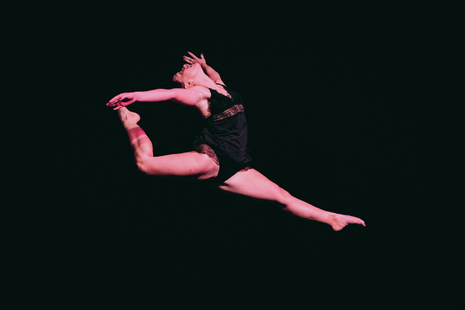Dance culture: ‘We were competing to be the thinnest’
Does dance culture need to change?

This article contains discussion of eating disorders and PTSD
Many of my closest friends and family were surprised when I told them I was going to Cambridge, because for the longest time, my dream was to become a professional dancer. I was born and bred in dance studios. I spent more time with my dance teachers than with my family and the dance studio really was my safe space.
But there is peril in familiarity. I became accustomed to the unhealthy culture of competition the other dancers and I were subject to. We were constantly pitted against each other. The farce of collaboration on stage was merely that: a farce. We were not only competing for the front row, for solos or for duets. We were competing to be the thinnest. The ubiquity of mirrors meant that examination, of yourself and of others, was inescapable. It has been shown that such experiences explain why symptoms of Post-Traumatic Stress Disorder areover three times more common among dancers than among the population as a whole.
“We were competing to be the thinnest”
‘To be a dancer is to be disciplined, in your training and in your eating,’ one of my dance teachers would tell us. But when more than one in two female dancers and one in three male dancers are not meeting their energy needs, discipline is no longer about training oneself to do something in a controlled and habitual way. Dancers are three times more likely to suffer from eating disorders than non-dancers. What a dancer might label ‘discipline’, the layperson would call a complete absence of control.
These eating disorders infiltrate every facet of one’s life. “All of my decisions, social and academic, are centred around my eating schedule and exercise schedule,” a dancer at Trinity Hall told me. Competitive dancers tend to train for 15-25 hours a week. This itself is enough of a strain on one’s social life, which is only compounded by having an eating disorder.
Recovery can sometimes be seen as impossible, given the normalisation of this culture in the community. One dancer told me that the Cambridge dance environment was a lot more “relaxed and fun”. Despite this, they explained how although there were “no mirrors in the dance studio”, as soon as they entered a class they would feel as though they were “sixteen again, in the depths of [their] eating disorder”. They felt like this was largely due to the fact that they “hadn’t recovered”. A healthy relationship with dance can only be formed once recovery is successful; that recovery requires taking oneself out of the dance environment.
“Being thin was a sign of a good dancer”
It took time away from dance for me to recognise just how abusive the environment had been, and many of the dancers I have mentioned felt a similar way. The dancer from Trinity Hall told me that during lockdown, they had forgotten “the beauty of dance because of all the competition and toxicity that comes with being in a dance studio”. Dancing in the comfort of their own room reminded them of the joys of dance, something they only experienced when they were “younger and carefree”.
Another dancer at Robinson College shared their experience of leaving dance. “Despite quitting dance during lockdown, I could not quit the habits instilled by dance,” they said. This has to do, in part, with the fact that a lot of us start dancing at a very young age, the average being between seven and nine years old. Our nurturing happens in the dance studio, with the role of the dance teacher often being conflated with that of the parent. It is no surprise then that dancers cannot separate dance from their lives outside of the studio. We embody the role, the habits and the thoughts of a dancer so intensely that we do not exist outside this role.
A lot of these thoughts are disordered ones. “Being thin was a sign of a good dancer and since dance was my entire life, I also thought it made me a good person,” said a dancer at Selwyn College. Dance is meant to be expressive, an escape. If one’s entire life is dictated by dance, it can start to feel more like a trap.
Dance is beautiful. It is both a sport and an art form. It is strenuous but made to look effortless. Dancers’ bodies are their paintbrushes, but paintbrushes should be durable. If an artist’s paintbrush begins to perish, there is a rupture in their work. It is no longer fluid. We must help to preserve our health and wellbeing, for dance means nothing without it.
 News / Cambridge students set up encampment calling for Israel divestment6 May 2024
News / Cambridge students set up encampment calling for Israel divestment6 May 2024 News / Cambridge postgrad re-elected as City councillor4 May 2024
News / Cambridge postgrad re-elected as City councillor4 May 2024 News / Proposed changes to Cambridge exam resits remain stricter than most7 May 2024
News / Proposed changes to Cambridge exam resits remain stricter than most7 May 2024 News / Some supervisors’ effective pay rate £3 below living wage, new report finds5 May 2024
News / Some supervisors’ effective pay rate £3 below living wage, new report finds5 May 2024 Fashion / Class and closeted identities: how do fits fit into our cultures?6 May 2024
Fashion / Class and closeted identities: how do fits fit into our cultures?6 May 2024





